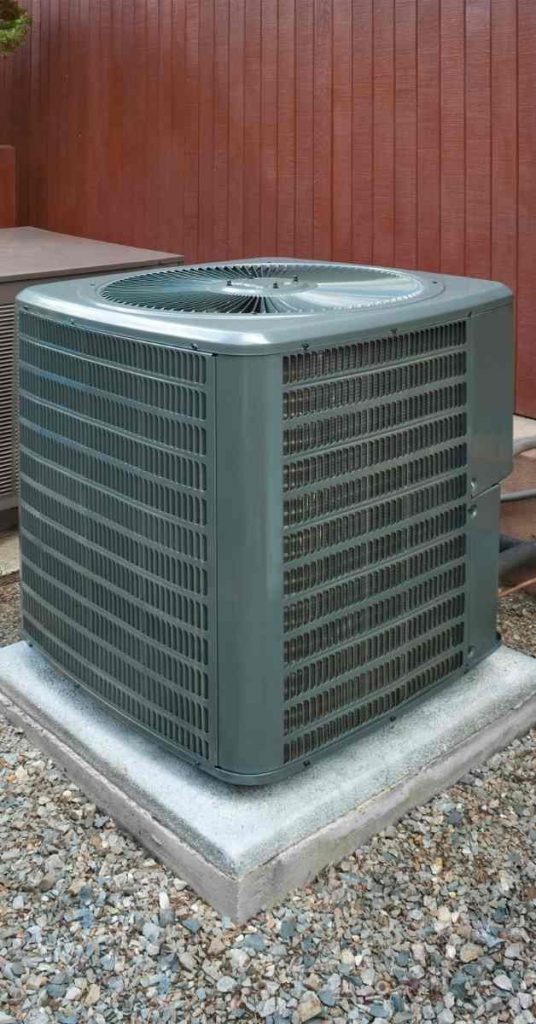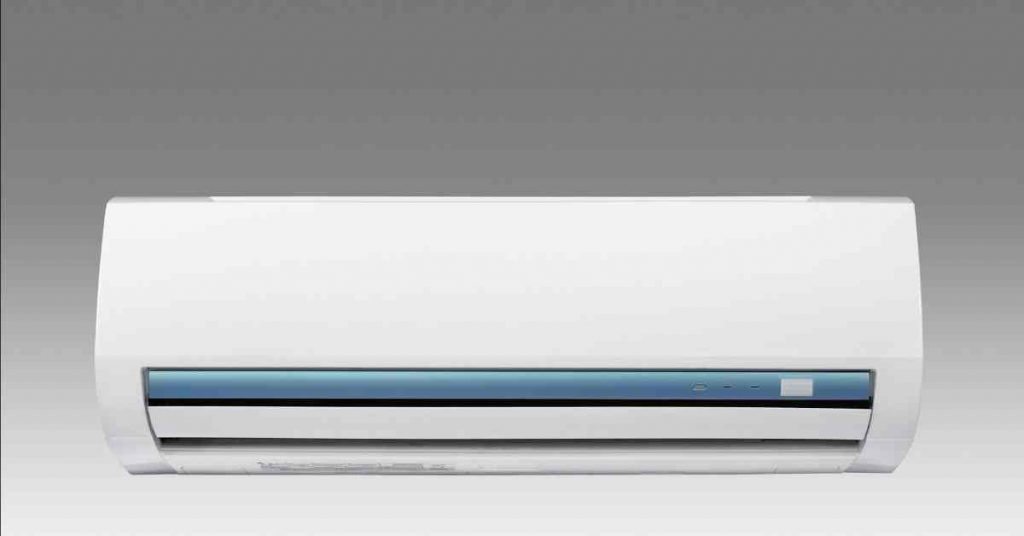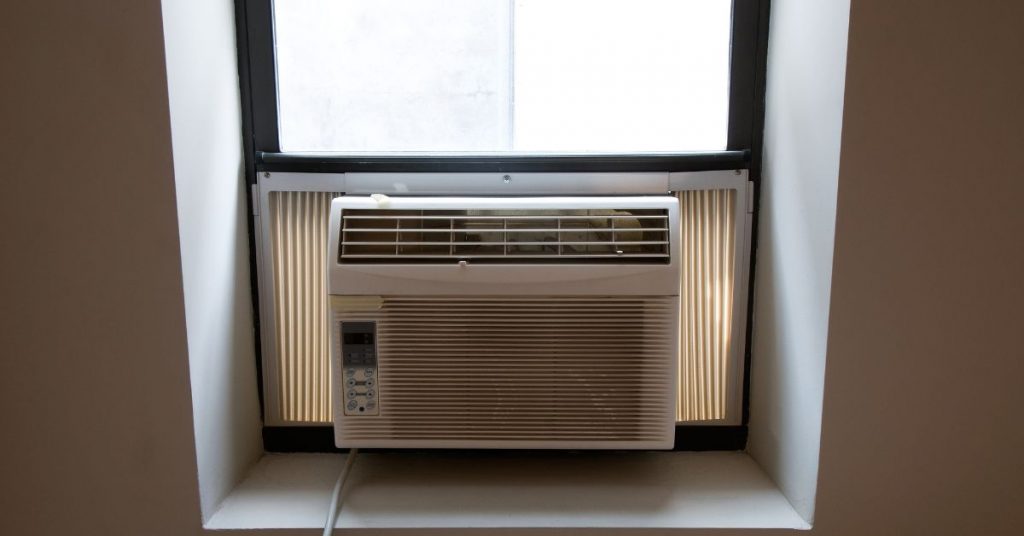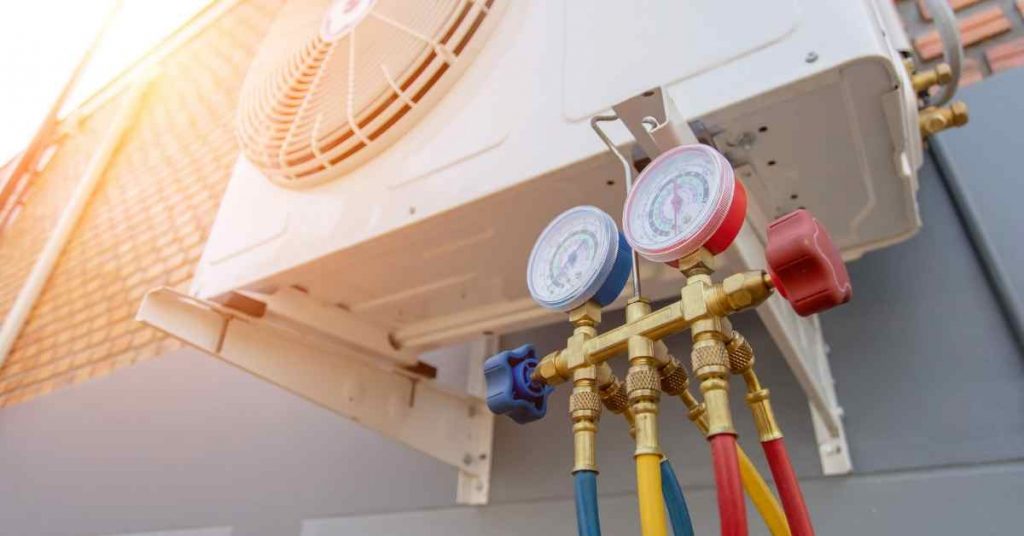
There are so many types of Air Conditioners……
Wondering where to start?
Here’s a summary of the main types of air conditioners:
- Central Air Conditioning:
- Central air conditioning systems are the most common type for cooling entire homes or buildings.
- They consist of a central unit (usually located outdoors) that cools and dehumidifies air, which is then distributed through ducts to various rooms.
- Central AC offers consistent and even cooling but requires ductwork for installation.
- Window Air Conditioner:
- Window AC units are compact and fit into a window or a specially designed wall opening.
- They are suitable for cooling single rooms or small spaces and are relatively easy to install.
- Window AC units are cost-effective but may obstruct the window and have limited cooling capacity.
- Split-System Air Conditioner:
- Split-system ACs consist of two main components: an indoor unit (evaporator) and an outdoor unit (condenser).
- They are versatile and can be used to cool individual rooms or multiple zones.
- Split-system ACs offer energy efficiency and quieter operation.
- Ductless Mini-Split Air Conditioner:
- Ductless mini-split systems are similar to split-system ACs but do not require ductwork.
- They consist of an outdoor unit connected to one or more indoor air handlers.
- Ductless mini-splits are ideal for room additions or spaces where duct installation is impractical.
- Portable Air Conditioner:
- Portable AC units are mobile and can be moved from room to room.
- They are easy to install and do not require permanent installation.
- Portable ACs are suitable for spot cooling but may be less energy-efficient than other options.
- Packaged Terminal Air Conditioner (PTAC):
- PTAC units are often found in hotels and apartment buildings.
- They are self-contained and installed through a wall or window.
- PTACs provide both heating and cooling and are controlled individually for each room.
- Evaporative Coolers (Swamp Coolers):
- Evaporative coolers use the evaporation of water to cool the air.
- They are energy-efficient and work well in dry, arid climates.
- Evaporative coolers are cost-effective but less effective in humid conditions.
- Geothermal Heat Pumps:
- Geothermal heat pumps use the consistent temperature of the ground to provide efficient heating and cooling.
- They are environmentally friendly and energy-efficient but require substantial upfront investment.
- Hybrid Air Conditioners:
- Hybrid AC systems combine a traditional air conditioner with a heat pump.
- They can switch between heating and cooling modes to optimize energy efficiency.
- Smart Air Conditioners:
- Smart ACs are equipped with Wi-Fi connectivity and can be controlled remotely via smartphone apps.
- They offer convenience and energy savings through remote scheduling and monitoring.
Need help choosing the right Air Conditioner and want a local pro to help you out?
Types of Air Conditioners with Pictures
The concept of air conditioning is very easy. You just need a system where a refrigerant (usually Freon) will circulate between the inside and outside of the house.
The Freon changes from gas to liquid fair easily thanks to the condenser and evaporator coils. While inside the house, the Freon is a cold liquid, meaning that warm indoor air loses heat to the refrigerant as a fan blows it over the evaporator coil.
At the end of the evaporator coil, the refrigerant will have been converted to a vapor/gas. It loses the heat from the house thanks at the condenser coil outside the house as a fan blows air over it as it moves through the coil and is circulated back to the house again in its liquid state.
A compressor (usually installed next to the condenser coil) acts as a pump which ensures that the refrigerant keeps circulating between the indoor and outdoor units.
With that brief description of how air conditioners work, let us now look at the different types of air conditioners:
1. Central Air Conditioners

As you can tell, the naming of these air conditioners implies that cool air is distributed from one central place and dissipated throughout the different rooms in the house.
Central air conditioners are also known as split-system air conditioners. That is because they have an indoor unit and an outdoor unit.
The outdoor unit houses the condenser coil and the compressor and is also known as the hot side. An evaporator is what is known as the indoor unit or the cold side.
The two units are connected using copper tubes. Both the condenser and evaporator coils are also thin copper tubes coiled so many times to increase the surface area for contact of the refrigerant with the surrounding environment for maximum heat exchange.
After cooling the house, the Freon first enters the condenser in its gas state where it is compressed and forced inside the condenser coil as a high-pressure high-temperature gas.
As the refrigerant moves inside the condenser coil, a fan blows air over the coils resulting in loss of heat from the refrigerant to the surrounding.
By the time the refrigerant is leaving the condenser coil and entering the evaporator coil, it has cooled down and gone back to its liquid state.
When the thermostat inside your house senses that the air in the house is getting warmer, it signals the air conditioner components to start running.
The evaporator coil fan sucks in air from the house using a network of ducts known as return air ducts. Hot air from the house is forced through the evaporator coil where the refrigerant removes the heat.

Cold air is then supplied to the house using the supply ducts as the refrigerant now in its gas state carries the heat away to the condenser coil to dissipate it to the outside.
An important point to note here is that with this type of air conditioning systems, all the spaces in the house are cooled to the same temperature. To some, this can be a disadvantage as they would like some rooms colder than others.
One advantage of split-system air conditioners is that apart from cooling your house, they also clean the air. As the warm air is pulled from the house it is passed through filters where dust, lint and other impurities are removed.
These air conditioners are also effective, quiet and most importantly conspicuous. The evaporator coil is installed away from living spaces. They are also great for controlling humidity throughout the house
The initial installation cost is quiet high and they are also invasive as the process involves the installation of ductwork. They are also not very energy-efficient.
2. Ductless Mini-Split Air Conditioners

As their name implies, ductless air conditioners have no air ducts like in central heating systems. Their evaporators are designed to cool only one room, where they are installed.
Just like central air conditioners, ductless air conditioners have an outdoor and an indoor unit. The outdoor unit houses the condenser coil and the compressor.
This is where it gets interesting. With these types of air conditioners, you can have several indoor units connected to one outdoor unit using copper tubing.
In that case, you will have separate indoor units in the different bedrooms, living areas and other spaces in your house. Each room will have its thermostat.
Perhaps the main advantage of ductless air conditioning systems is that they allow you to cool different spaces differently. If for instance you want the kids bedrooms a little warmer than yours, you will just need to set the thermostat as such.
Ductless air conditioners are also very energy efficient since you really don’t need to cool the entire house at all times.
Installation of these types of air conditioners is also cheaper and less invasive. As is the case with central air conditioners, you do not need to install ductwork which is something some people would really consider.
I would say that the main disadvantage of ductless air conditioners is that they are quite conspicuous. The indoor unit is mounted on the wall where they are quite visible, which can be less than ideal for some homeowners.
A single indoor ductless air conditioner unit may also not be sufficient to cool large spaces so if you are in such a scenario you may want to reconsider.
Ductless air conditioners are operated using a wireless remote controller combined with smart AC controllers meaning you can operate them using you cell phone from anywhere.
3. Window Air Conditioners

Window air conditioners, also known as “unitary units” are self-contained units which as their name suggests are installed in the window of a room.
By self-contained, I mean that all the components (condenser coil, evaporator coil, compressor and fan) are one package. They are therefore compact units that are best suited to cooling small spaces.
Although they are primarily installed in the window of a room (covering the lower section of the window), window air conditioners can also be installed away from windows by making a hole in a section of the wall.
Ideally, window air conditioners are perfect for apartments and other tiny living spaces like container homes. You can also install each in every level of your house and in each room but that would be costly and also not energy-efficient.
The back side of window air conditioners is usually exposed to the outside of the house and that is where heat from the house is discharged from. Cold air from the evaporated is dissipated from the front of the unit using a fan.
To make sure that the air coming from the air conditioner is clean, these types of air conditioners have a removable filter which you only need to clean and put back. It also has control buttons on the side but some are operated using a remote control.
Among the many advantages of window air conditioners is that they are inexpensive, easy to install, cheaper to maintain and their compact size also saves your floor space. These units are also quite energy-efficient.
The main disadvantage of window air conditioners is the limited cooling area. Folks with large living spaces will not benefit from these units since their cooling demands will overwhelm them.
The fact that all the components of window air conditioners are combined to form a single unit means that they can be quite noisy. When installed in an office where concentration is key then these units can easily distract.
Since the rear side of the units is visible from the house, some people will find that the outward appeal of their home is somewhat compromised.
Another inconvenience associated with window air conditioners is that you must remove them during winter or winterize them altogether.
I will also add that if you really like the view outside your house from the window, these air conditioners will come in your way. But you can opt to install them away from the window by making a hole elsewhere in the wall.
4. Portable Air Conditioners

Just like window air conditioners, portable air conditioners are a type of packaged air conditioning systems with all the components combined in one unit.
They are however frees-standing units that are also designed to cool only one area of the house, and that is the area where they are positioned.
As their name implies, portable air conditioners can easily be moved from one room to another. They only need a power outlet to power them up and access to a window to discharge the heat from the house using a hose.
It is important I make it clear that while window air conditioners are installed in the window, portable air conditioners only need the window to pass the hose which removes the heat from the hot indoor air.
Portable air conditioners come in different sizes. You can get a big one to cool an entire room or even a small one enough to cool a bathroom.
Portable air conditioners work by pulling air from the room, cooling it and then releasing it back into the room. They then use an exhaust hose to vent warm air outside through the window
Depending on what you are looking for, you can choose between a single-hose portable air conditioner and a double-hose portable air conditioner.
The single-hose Portable AC pulls air from the room and discharge it outdoors while the dual-hose portable AC has another hose which pulls air from outdoors and uses it to cool the compressor.
Needless to say, the main advantage of portable air conditioners is the ease with which they can be moved between different rooms. They are also inexpensive and easy to install and maintain.
Just like window air conditioners, portable air conditioners’ cooling range is limited and will also need to have the window opened, which can be a security concern for some people.
Portable air conditioners are also noisy and take up floor space. They must also be uninstalled each winter.
5. Floor-Mounted Air Conditioners

Floor-mounted-air conditioners are a special type of mini-split air conditioning systems. They are a great alternative if you do not have the space in your wall to install a wall-mounted unit.
If the walls of your house are tiled or are made of fragile material like glass then this is the unit to consider, and also if you don’t prefer central air conditioners.
The indoor unit is placed on the floor of the room you intend to cool while the outdoor unit can be placed just about anywhere outside. You can connect the 2 units by making a small hole on the wall.
Since these units are easily accessible, removing and cleaning the air filter is a cinch. This is especially a great option for the elderly who would have problems accessing wall-mounted units and also those who like to keep the air in their rooms clean all the time.
Another advantage of floor-mounted air conditioners is that they cool the room fairly fast since they are positioned at your level. Since hot air rises and cooler air moves downwards, the cooled air at the floor-level of the unit will remain as such which happens fairly fast as well.
The disadvantage of these cooling units is that objects in the room like couches can inhibit the circulation of air from the indoor unit to the rest of the house. They are also not the best for big spaces as a result of uneven airflow distribution.
6. Geothermal Air Conditioners

Geothermal air conditioners utilize the temperature below the ground for cooling and heating. It is a relatively new technology of heating and cooling that is not only sustainable but efficient and with a long lifespan.
What many homeowners don’t know is that the temperature of the ground below us (below 4 to 6 feet) remains a consistent 55 degrees be it winter or summer. We can therefore use that temperature for our cooling and heating needs all year round.
The geothermal air conditioning systems has a loop that circulates water (not refrigerant) between your house, the ground and a heat pump. They are quite expensive to install but once installation is done maintenance is cheap and are quite efficient and cost-effective.
How these unit systems work is that during the winter, heat is extracted from the ground and distributed to your house. During summer when it is hot, heat is extracted from your house and dissipated through the ground.
The advantages of geothermal air conditioning systems are that they are energy-efficient and have a long lifespan.
Since the loops are installed in the house, it is very important that you house is located in a place where such an installation is possible. That can be a disadvantage for some people.
7. Hybrid/Dual-Fuel Air Conditioners

A hybrid air conditioner, also known as a dual-fuel AC works pretty much like a hybrid car. It conveniently chooses which fuel to use (between electricity and fossil fuels) for you cooling and heating needs.
The system comprises of a gas furnace and an electric heat pump. Interesting enough is the fact that the system will automatically use the most cost-effective fuel at the time and is also quite efficient.
At installation, the system is programmed what temperature it will switch from the electric heat pump to the gas furnace. You can however also do that manually.
This is where I will remind you that heat is transferred from a point of high concentration to a point of low concentration. You feel cold during winter because heat is escaping your body to the surrounding. The opposite is also true for summer.
During the hot months of summer, the heat pump removes hot air from your house and directs it outside. The gas furnace then kicks in during winter and the opposite happens.
The main advantage of hybrid air conditioners is low utility bills. It is also a fantastic way of lowering your carbon footprints.
The initial installation cost of hybrid air conditioners is high. This is the main disadvantage of these units.





